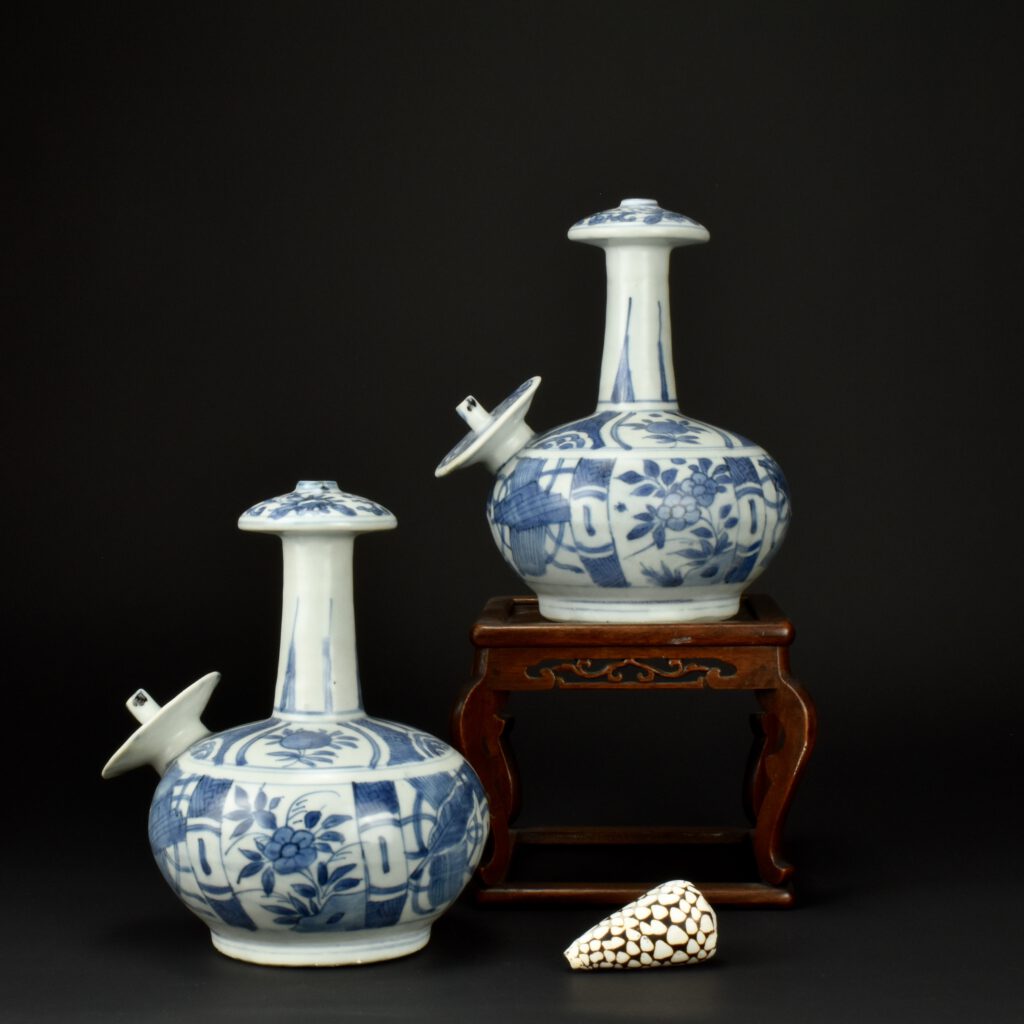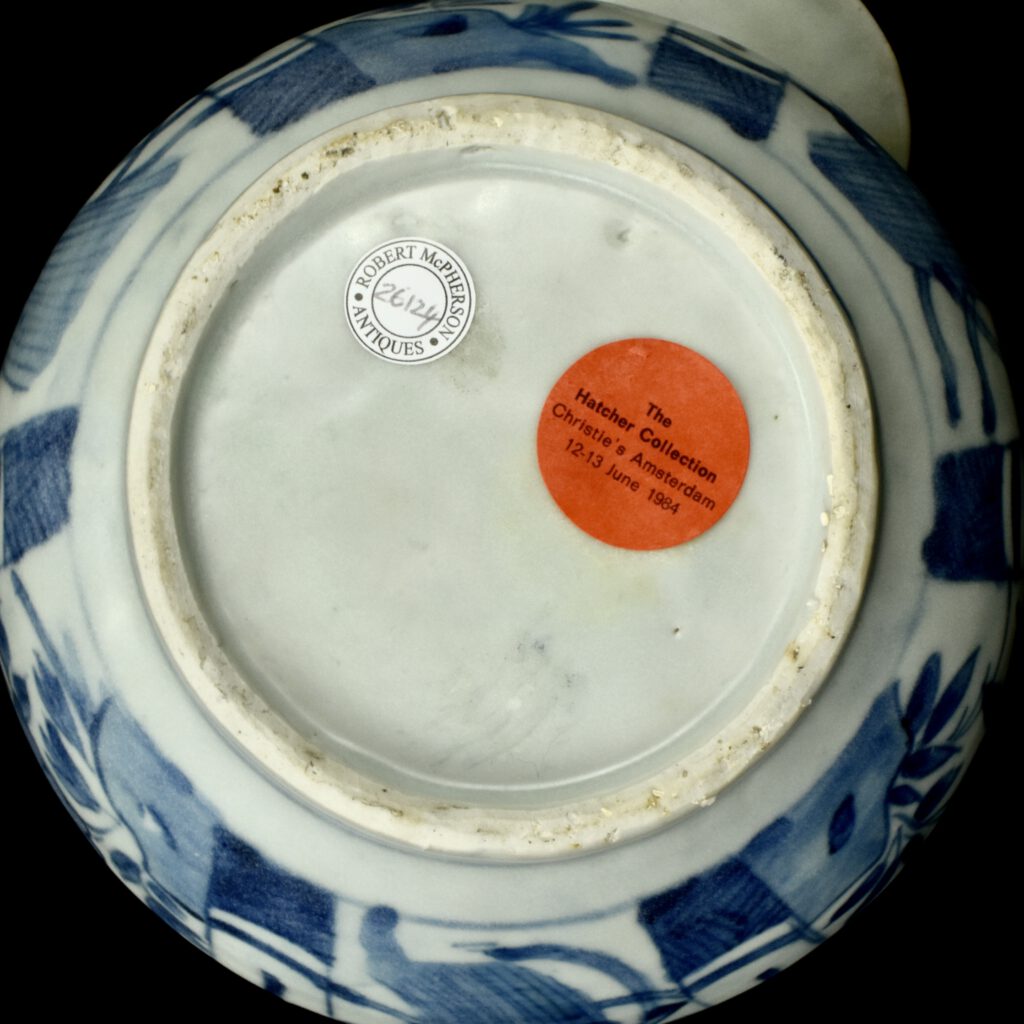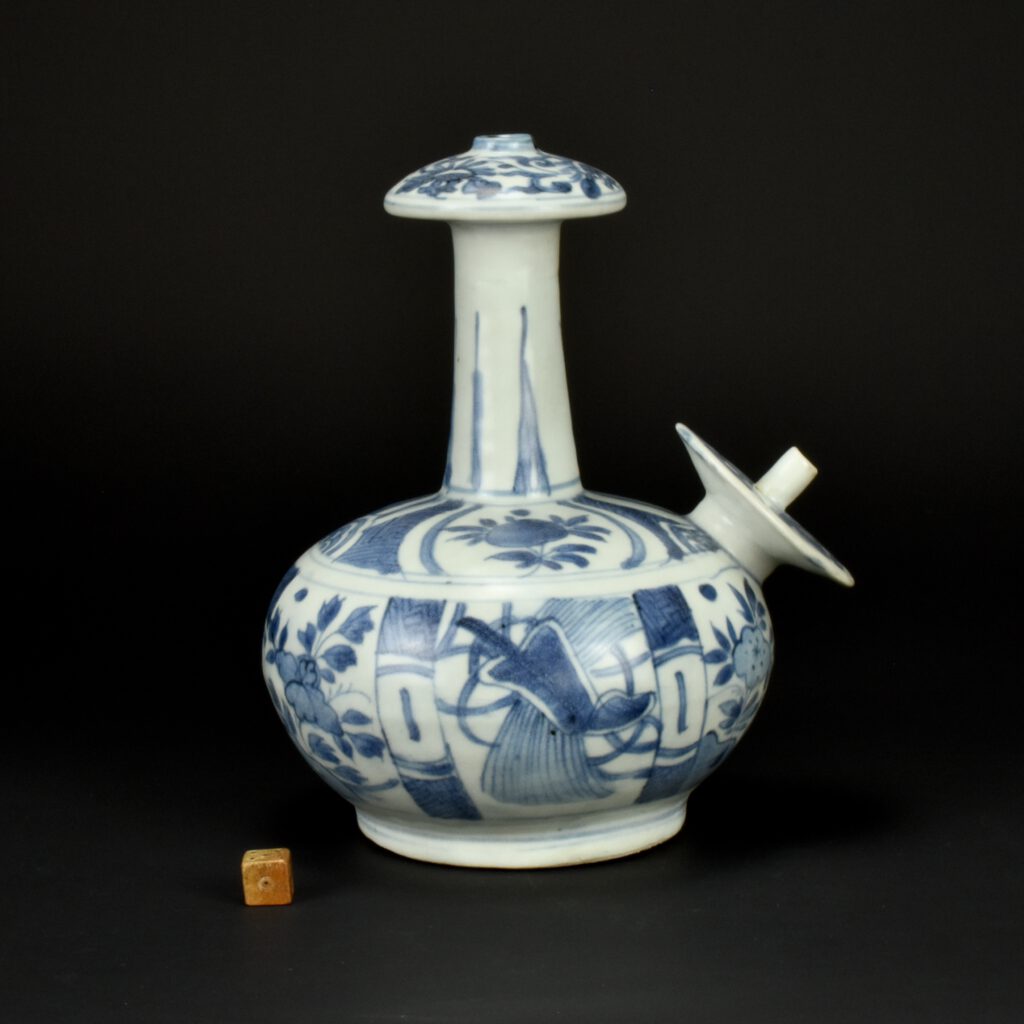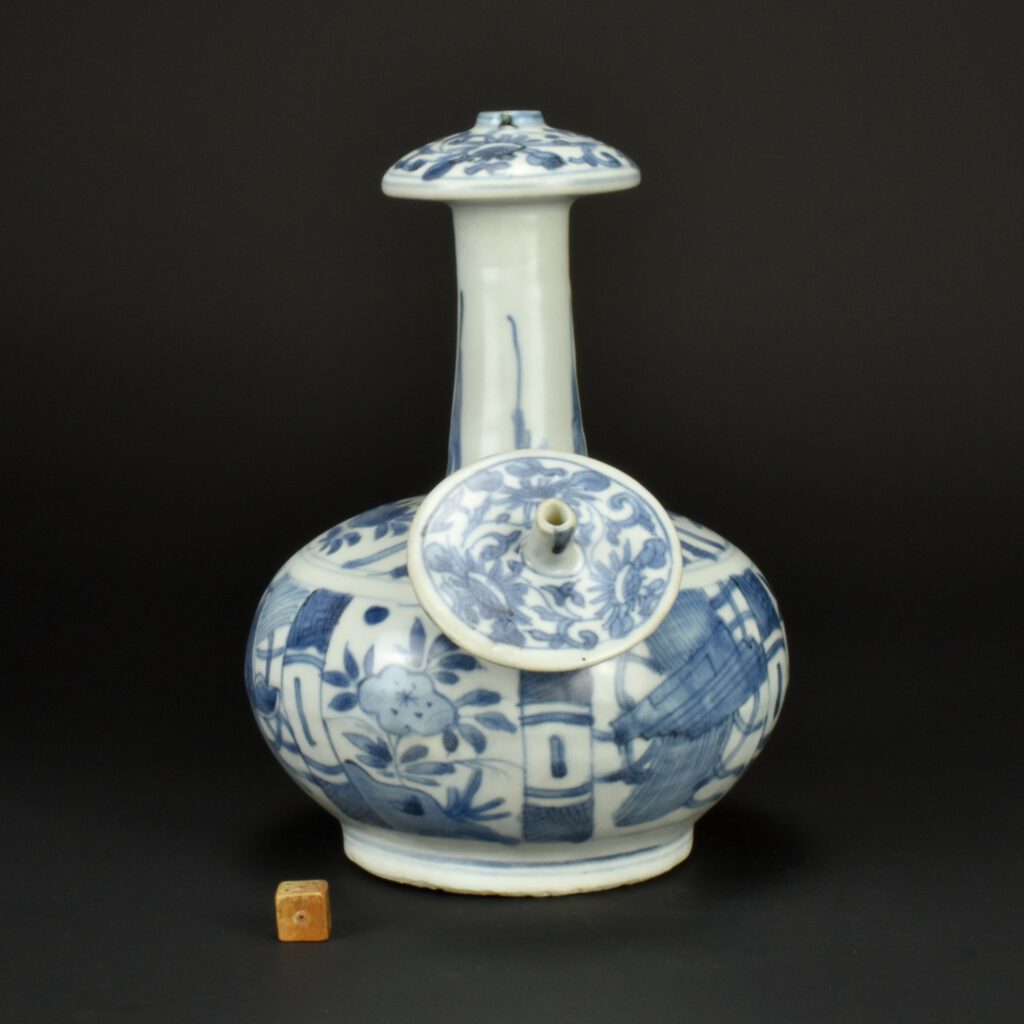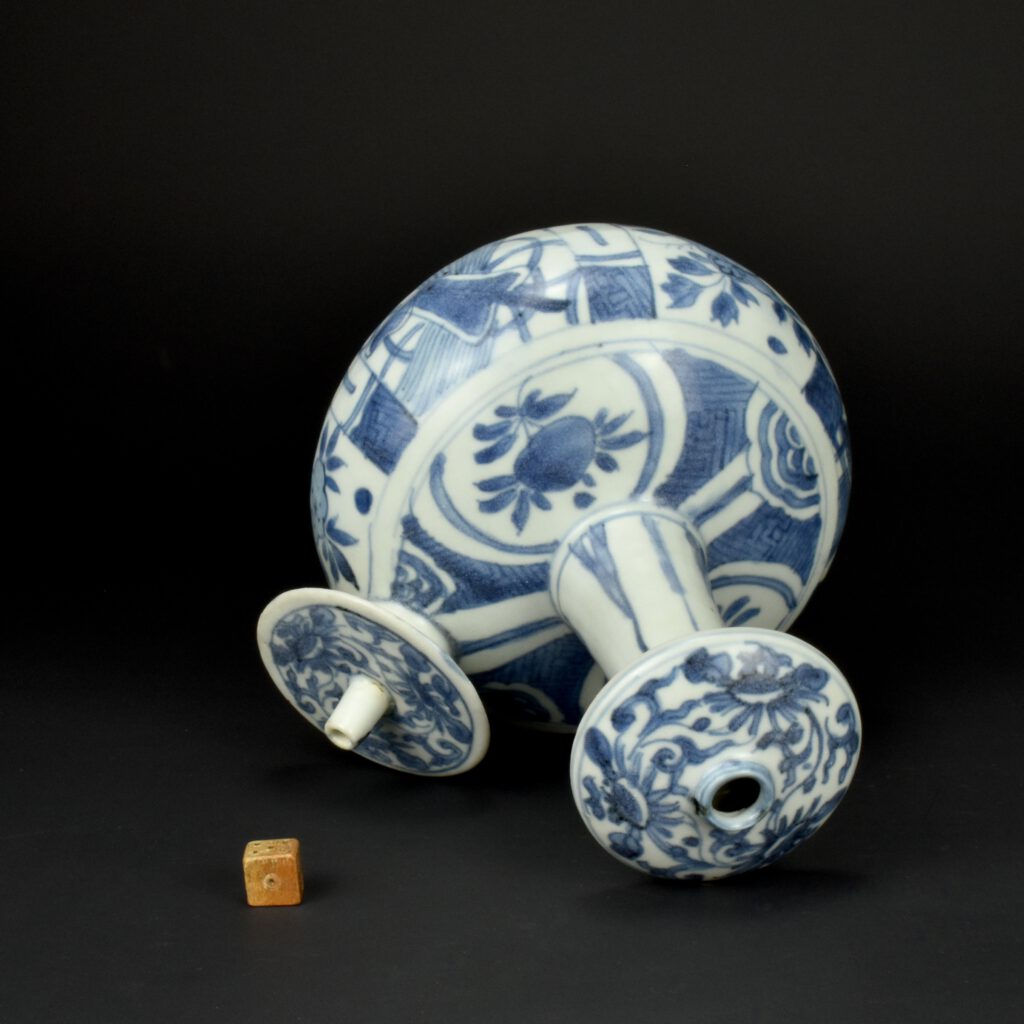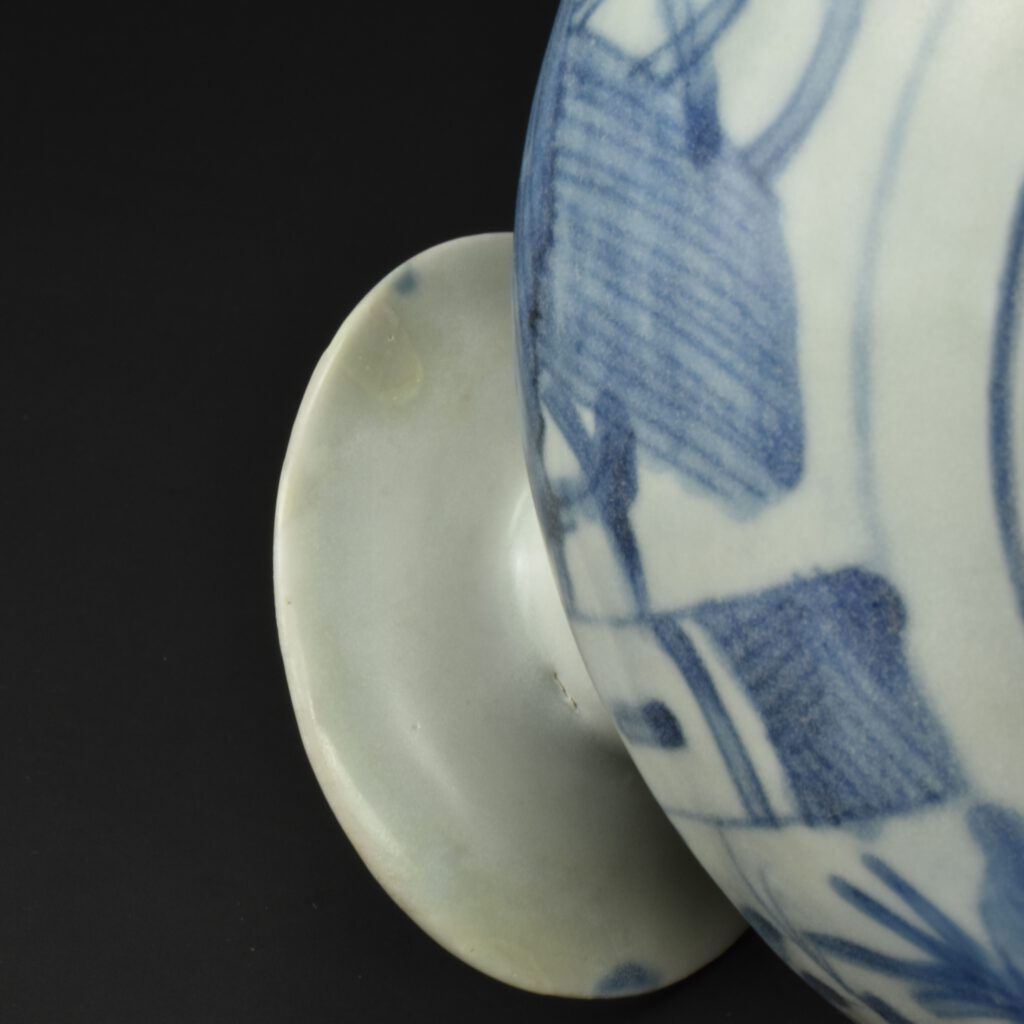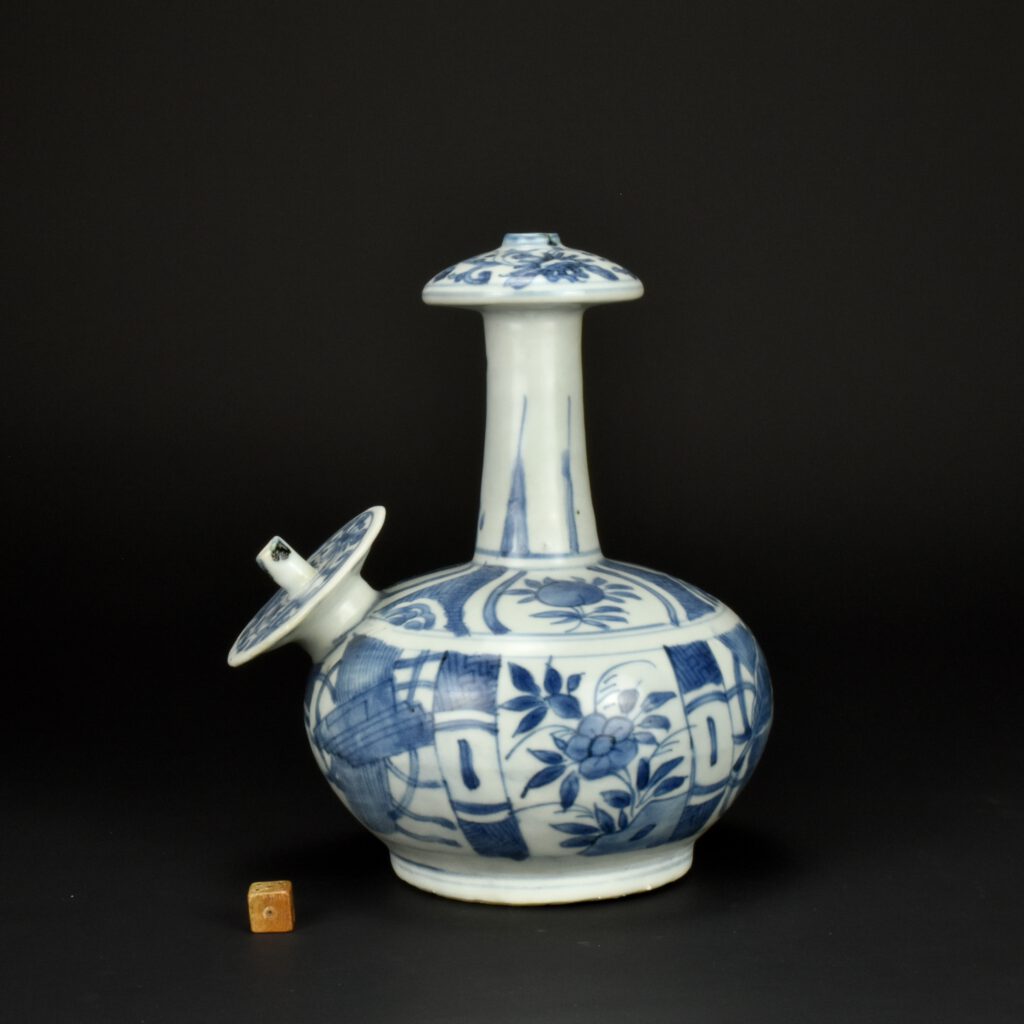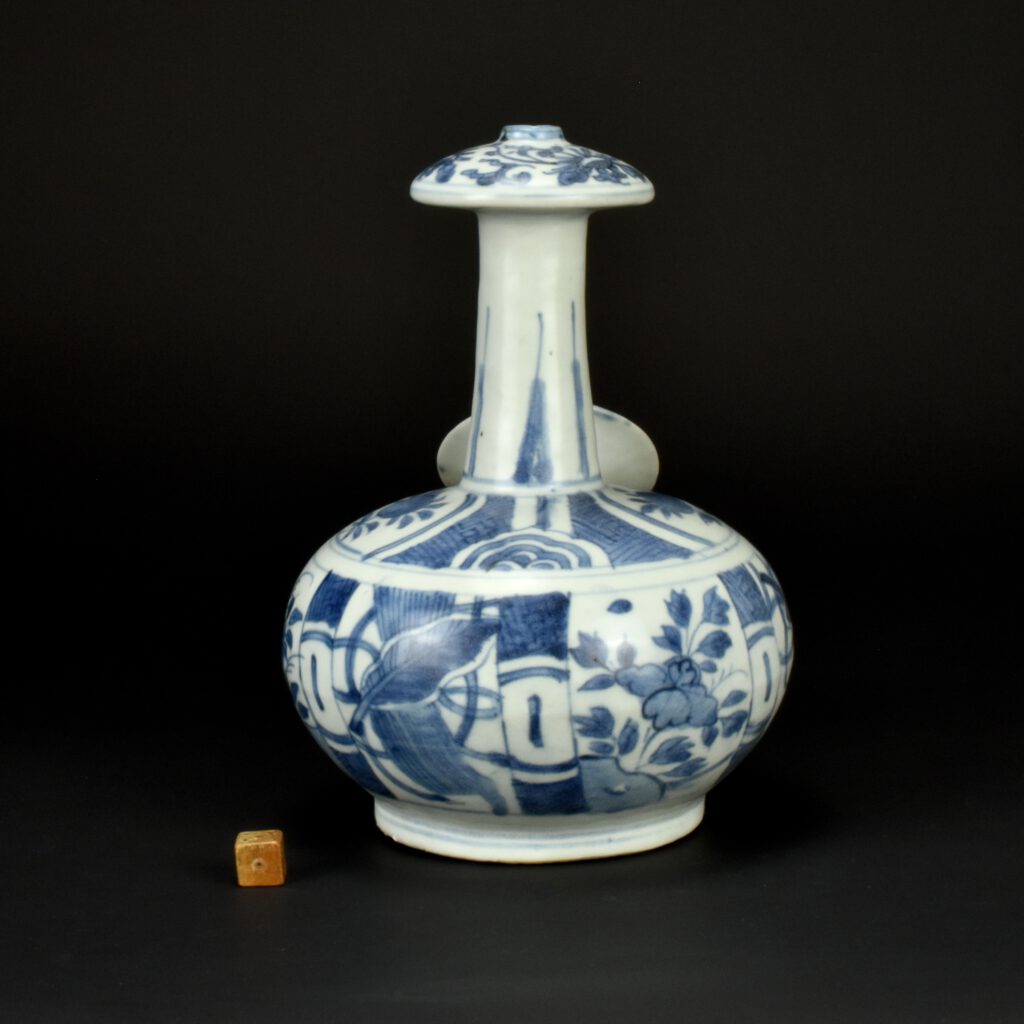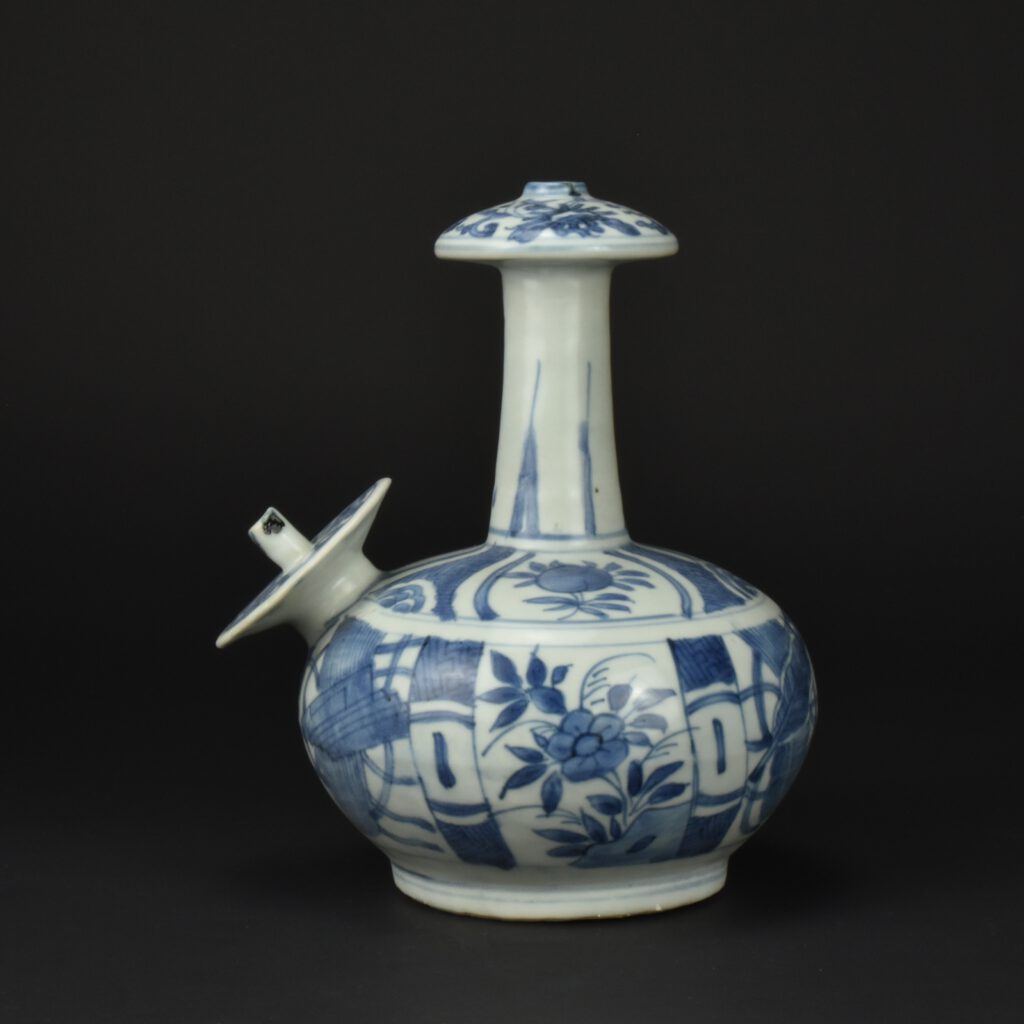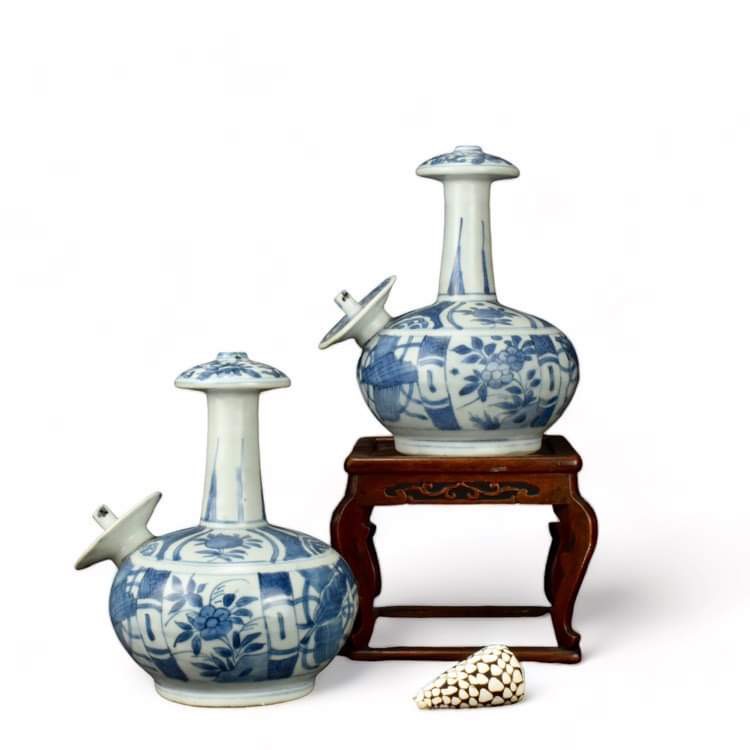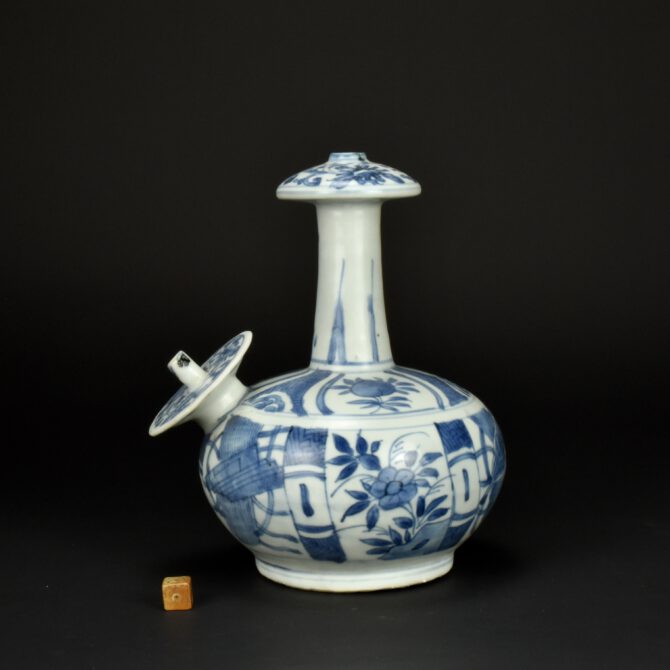
Hatcher Cargo Kraakware Ming Porcelain Kendi, Transitional Period c.1643
A Blue and White Transitional Porcelain Kraakware Kendi from the Hatcher Cargo c.1643, late Ming, Chongzhen 1628-1644. The Hatcher Cargo was the first porcelain cargo from a shipwreck to come on to the market. It was sold in several auctions in Christie`s Amsterdam in 1984 and 1985. It remains one of the most important cargoes of shipwreck ceramics ever recovered, despite the lack of historical evidence recorded by the salvage team. Two porcelain covers dated 1643 helped date the wreck but this needed corroborating to give a firm date of the wreck and it`s cargo. The dating of the porcelain from the Hatcher Cargo is based on several elements. Firstly, the ceramics recovered form a coherent group, in other words they appear to all have been made at the same time. Secondly comparative dating was used to corroborate the date of the porcelain.
SOLD
- Condition
- One small filled chip to the edge of the vulnerable flange, see photographs below. The glaze still has a sheen despite being underneath the water.
- Size
- Height 20.2cm (8 inches)
- Provenance
- The Hatcher Cargo, Christie's Amsterdam, 12-13 June 1984
- Stock number
- 26124
- References
- A pair of Hatcher Cargo Kendi are on display in the British Museum, see photographs below. We have sold two Hatcher Kendi before, see below and our Sold Archive, items 24200 and 26125 (photographs below). There are example illustrated in the Catalogue of the Hatcher Cargo Amsterdam, 12-13 June 1984 and related books.
Information
Two Very Similar Hatcher Cargo Kendi c.1643
Robert McPherson Antiques - Sold Archive
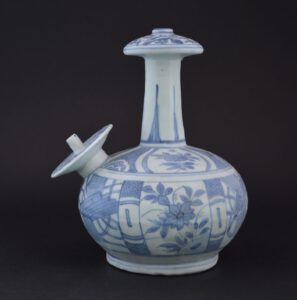
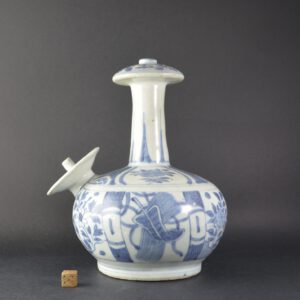
Two Hatcher Cargo Kendi at the British Museum
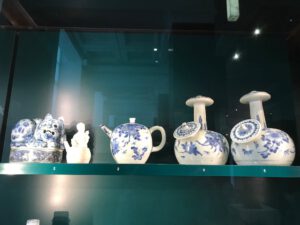
From the British Museum Website
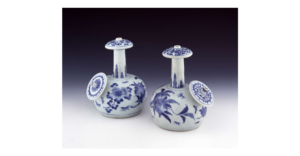
Pair of porcelain kendi with underglaze blue decoration. This pair of kendi each has a compressed globular body, tubular neck, disc-shaped mouth and spout with narrow tubular opening. The base is unglazed and slightly sunken in the centre. Both are painted in 'transitional' style with insects including butterflies and naturalistic plants such as pomegranates, chrysanthemums, lychees and finger citron in rich shades of underglaze blue. A finger citron, 佛 手 'fo shou' [Buddha hand], is a citrus fruit of bizarre appearance with excrescences resembling fingers on a hand. Sweet-smelling, it is often used to perfume a room, though it is not eaten. With minor variations in the arrangement of the motifs the top of each vessel is decorated with flower scrolls and the spout with a flower scroll or petals and with a petal border. Sand, from the ocean bed, has blocked the spouts.
Curator's comments Jessica Harrison-Hall 2001:
The kendi were recovered from among some 25,000 vessels found on the wreck of an unidentified Asian ship in the South China Sea. This ship is known as the 'Hatcher wreck' after Captain Michael Hatcher who discovered her and salvaged her cargo in 1983. There is no written record testifying to the exact year of her sinking but the covers of two oviform jars inscribed in underglaze blue with a cyclical date corresponding to 1643 make a fairly precise dating of the wreck possible. The cargo primarily consisted of two types of blue-and-white porcelain made at Jingdezhen at the end of the Ming dynasty - late variations of 'kraak' ware and examples of a 'transitional' style characterized by landscape motifs and naturalistic plants and birds. The ship may have been on its way to Indonesia, carrying also spices, silk and other commodities for sale to the Dutch whose East India Company had offices in Batavia (modern Jakarta), Indonesia. Chinese junks sailing to Batavia or Bantam varied in size from 200 to 800 tonnes. The journey out was made over three weeks during December and January and the return trip took place in June and July. The shape of these kendi is neither Chinese nor European, but derives from South-east Asian water pourers. Although this might suggest that they were destined for sale to South-east Asian customers rather than for transport on to Holland, we know from surviving Dutch still-life oil paintings that porcelains in shapes seemingly made for non-European customers were sold and used in Europe. Out of a total of 545 kendi, eleven with this type of 'transitional' decoration were sold at auction over the four Christie's sales of the Hatcher wreck cargo. Most kendi recovered from the wreck had 'kraak'-style decoration.
The Hatcher Cargo
The Hatcher Cargo was the first porcelain cargo from a shipwreck to come on to the market. It was sold in several auctions in Christie`s Amsterdam in 1984 and 1985. It remains one of the most important cargoes of shipwreck ceramics ever recovered, despite the lack of historical evidence recorded by the salvage team. Two porcelain covers dated 1643 helped date the wreck but this needed corroborating to give a firm date of the wreck and it`s cargo. The dating of the porcelain from the Hatcher Cargo is based on several elements. Firstly, the ceramics recovered form a coherent group, in other words they appear to all have been made at the same time. Secondly comparative dating was used to corroborate the date of the porcelain. Comparative dating is also consistent with the presumed date of the porcelain. However, the most important dating reference remains the two covers recovered from the wreck datatable by inscription to the spring of 1643. Although the the Ming dynasty officially ended in 1644 the transition from the Ming to the beginning of the Qing was messy and protracted. The porcelain made during this period of civil war and chaos is referred to as `Transitional Porcelain`. It covers the period from the last Ming Emperors until the early years of the Kangxi period, which is normally given a date of about 1620 to 1670 . The Hatcher Cargo is a vital dating tool for this previously poorly understood period of Chinese porcelain production.
Kendi
The kendi is defined as a vessel with a round body, tall neck, mouth, a spout on the shoulder and a flat base. The two openings make the kendi suitable for both pouring and drinking liquids. It is distinguished from other pouring vessels such as a jug or flagon by the absence of a handle. The presence of a spout on the shoulder places it in the broader typology of a spouted vessel. To drink from a kendi, grasp the neck with one hand ; place the other on the base for support if desired, hold the vessel away from the body, point the spout towards the mouth and slowly tilt it to start the water flowing. As the lips never touch the spout, the kendi is a hygienic and convenient communal drinking vessel.
